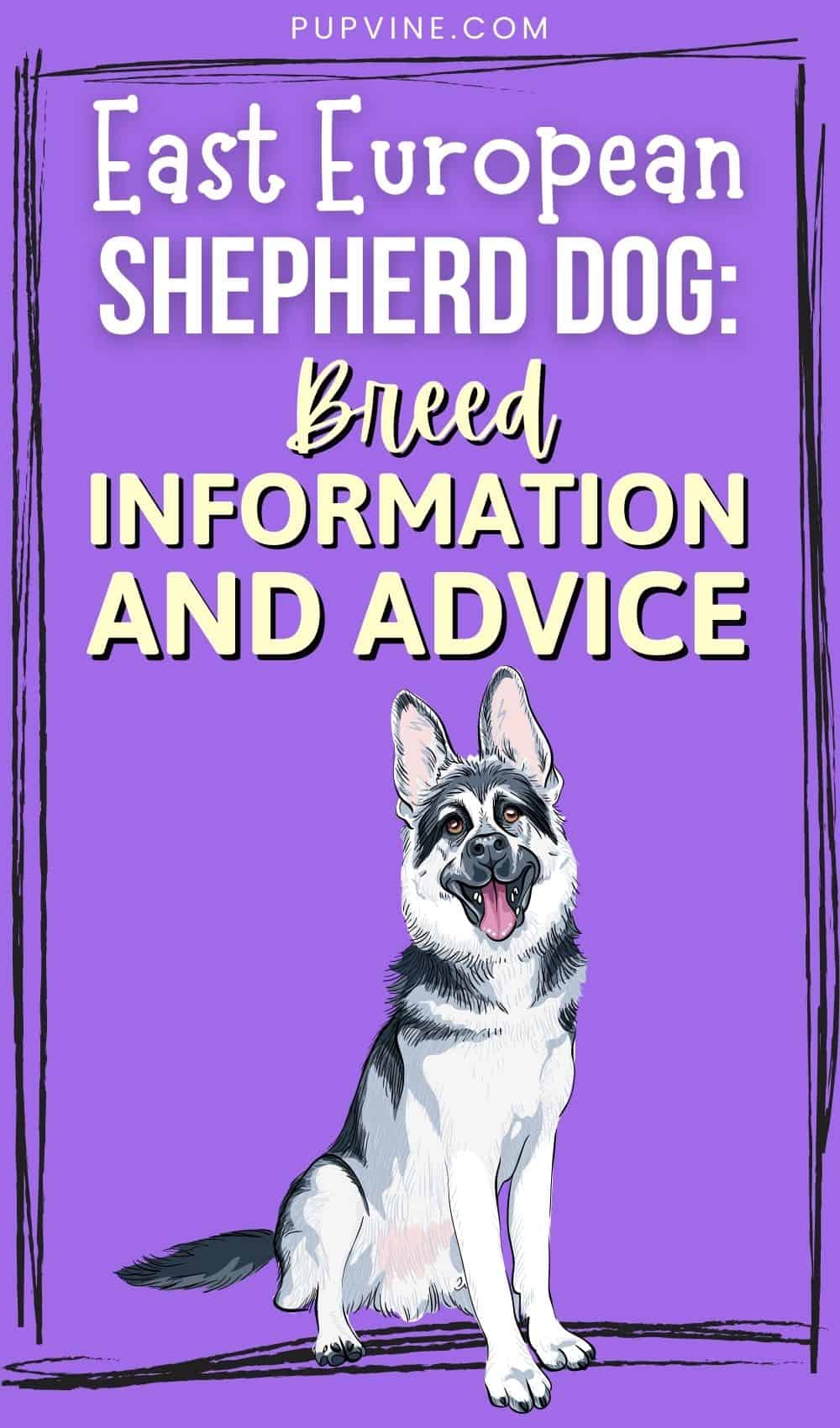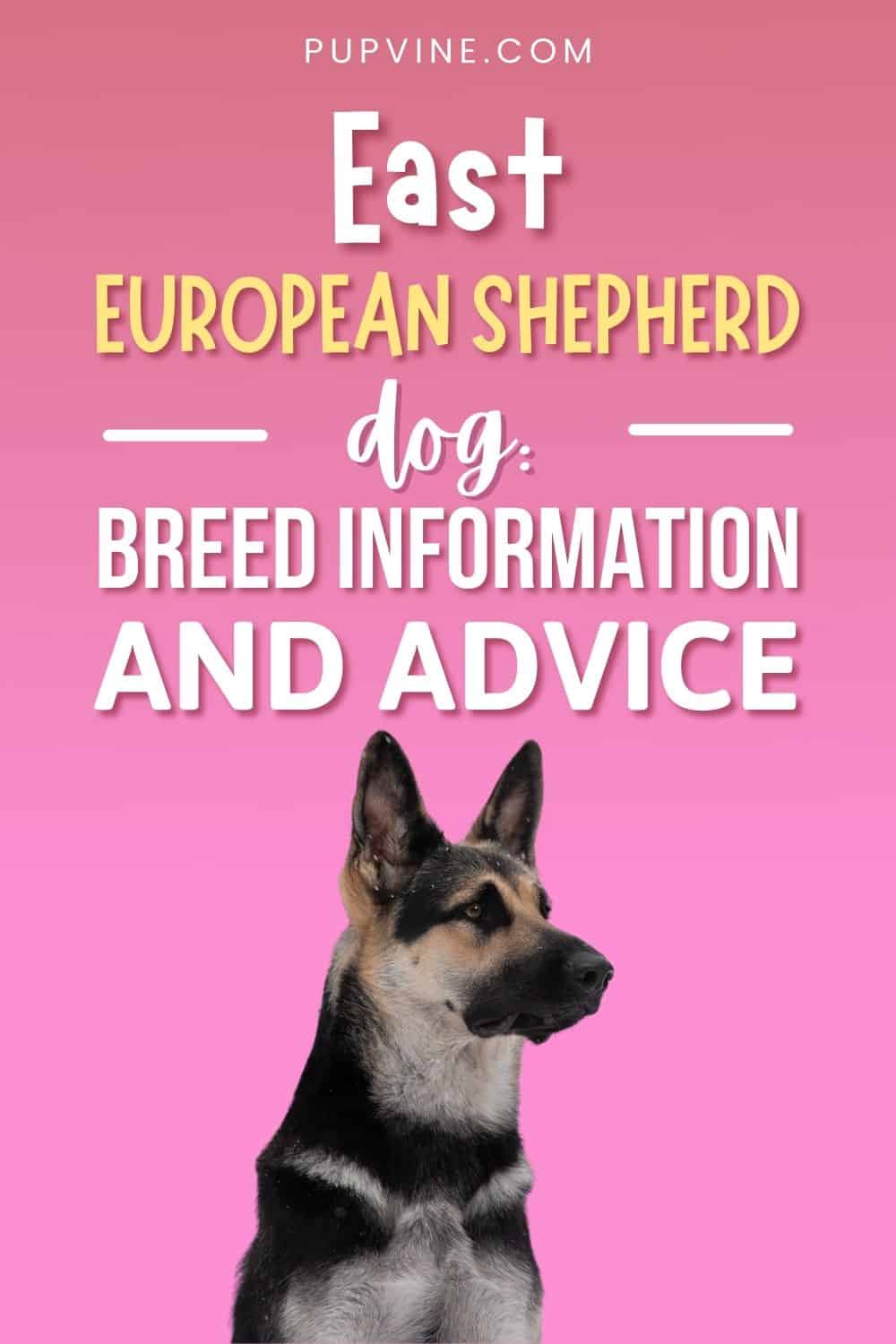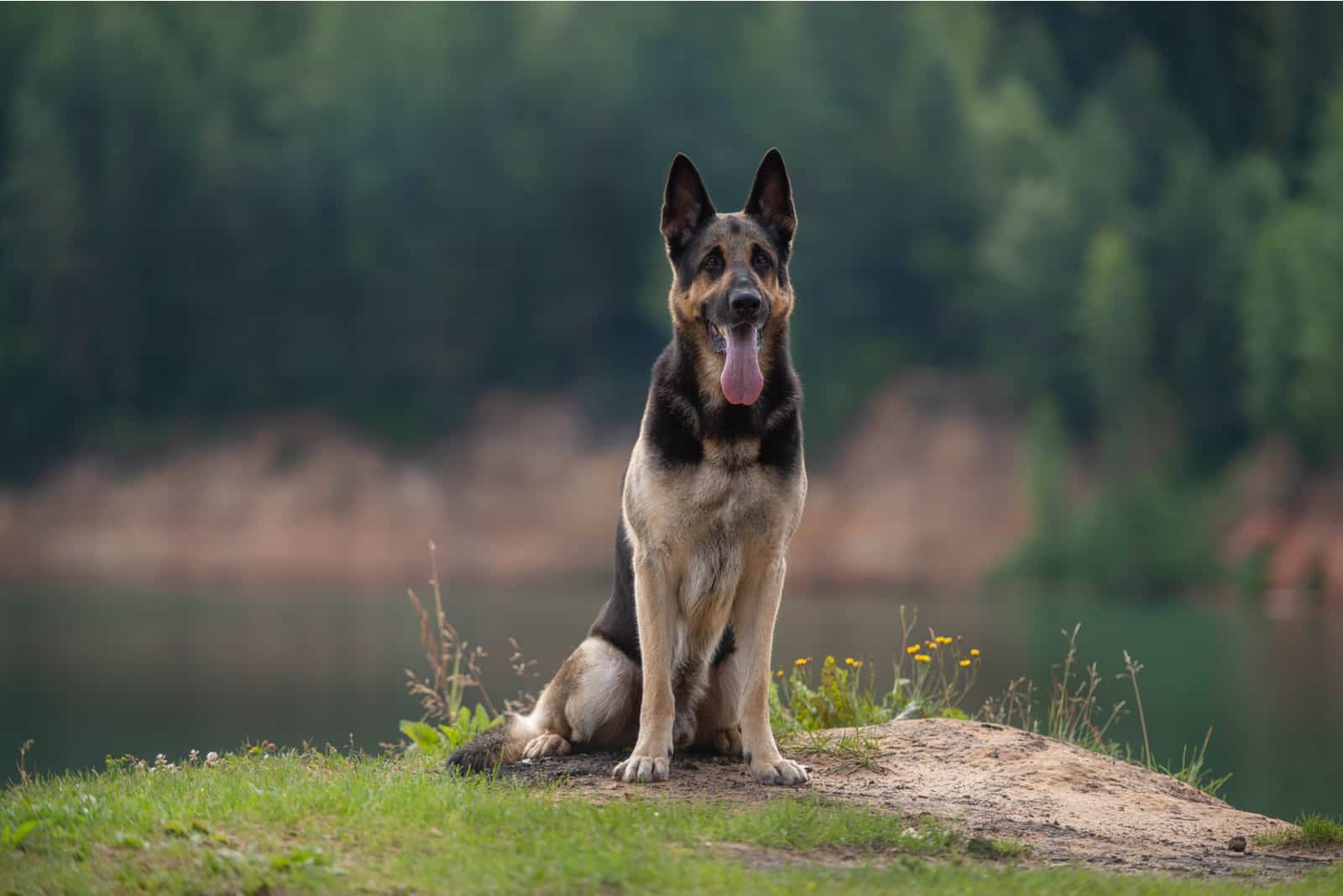Most people around the world are pretty familiar with the German Shepherd dog. It’s one of those distinctive dog breeds usually noted for its black and tan coat, pointed ears, and long snout. They are alert, courageous, and loyal, but they also have a softer side, and most will be happy to have a cuddle.
But, how many people have heard of the East European Shepherd? Anyone? Maybe people in Russia and Eastern Europe, but these dogs are not extensively known elsewhere.
And, that’s a shame because they’re just as beautiful, brave, and loyal as their German counterparts. However, there’s one notable difference: they are more of a working dog than a pet. It’s not impossible to keep them as a companion, but there are a number of caveats we need to be aware of.
We’ll discover what these are as we dive into the world of the Восточно-европейская овчарка, to use its Russian name! In case you don’t speak Russian, this simply means East European Shepherd. Incidentally, if you want to use the shortened version of their Russian name, it’s VEO, and we’ll be seeing this again in some of the sections below.
What is An East European German Shepherd?
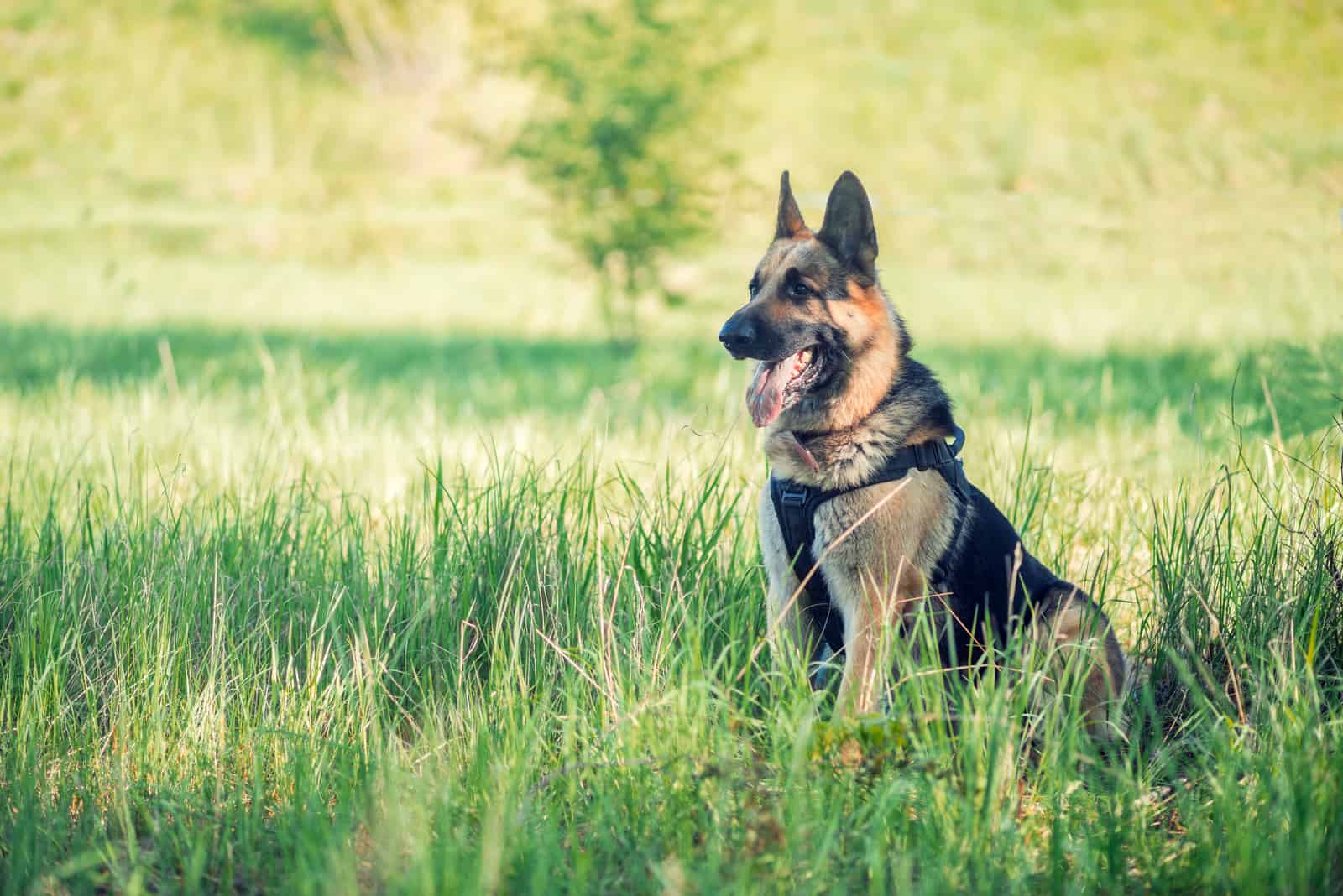
As you probably guessed, it’s a version of the German Shepherd, with an Eastern European twist.
As lovable as all dogs are, some breeds have a more fascinating history than others. The East European Shepherd breed definitely falls into this second category!
How many other dogs can claim to have their breed type approved by the Cynological Council of the Ministry of Agriculture in the USSR? It evokes images of cold war tension, spies, and espionage. Although this event, establishing the first standard, took place in 1964, the breed has its origins two or three decades earlier. In fact, a breed standard was suggested in 1955 by another department in the USSR government.
Between the 1930s and 1950s, the Russian Army started to develop a service dog that was specially equipped for working in the harsh Siberian climatic conditions. It needed to be fearless, strong, intelligent, and obedient. It had to be self-assured and calm, but alert enough to act the instant it was given a command.
To achieve this, they crossed Russian breeds, such as the Caucasian Shepherd, the Central Asian Shepherd, and the East Siberian Laika with the German Shepherd, including bloodlines taken by the Russian army territory in Germany during World War II. One of the main aims was to eliminate the problem of hip dysplasia that is common in their GSD cousins.
The result was a powerful, protective, and faithful working dog, somewhat larger than a normal German Shepherd. It does have a playful side, but it is generally more of a serious guard dog that loves to be kept busy. This work involves being a guard dog and a sniffer dog… tasks at which it excels.
In effect, it’s a German Shepherd and then some! The ‘German’ part is usually dropped from its name to try and establish it as a separate breed, but many people still refer to it as the Eastern European German Shepherd.
As beautiful as this breed is, its dark coat reflects an equally dark chapter of its history: this was the dog of choice of the KGB… the highly-feared Russian secret police. They used these dogs to intimidate and control Russian citizens. In fact, the KGB kennels played on the dog’s dark looks, going to the extremes of destroying entire litters if even one single dog was not solid black.
The important thing to take from this is that it was not the dog’s fault! The positive aspect to take away is that the Eastern European Shepherd is an imposing force when you want it to be, and it will be fiercely protective when necessary.
We mentioned the Russian name above in Russian characters. You may also see this written as Vostochnoevropejskaya Ovcharka, or in Polish, Owczarek Wschodnioeuropejski. Both still mean Eastern European Shepherd, although this dog also goes by the name of Byelorussian Shepherd, as this is the region where it originated.
Eastern European Shepherd Vs. German Shepherd
Let’s look at these two breeds to see just how different they are:
Size
[table id=74 /]
[table id=75 /]
As you can see, the Eastern European Shepherd is bigger, and in some cases, much bigger! They appear more solid and slightly thicker than the GSD, though in all other aspects, they look the same.
Even so, you might notice that the VEO has a straighter back, whereas the GSD has that familiar slope down to the hindquarters.
These heights are measured at the withers (the shoulders), so when they stand by your side and those long ears are pointing straight up, either of these breeds would make an impressive and intimidating sight.
Temperament
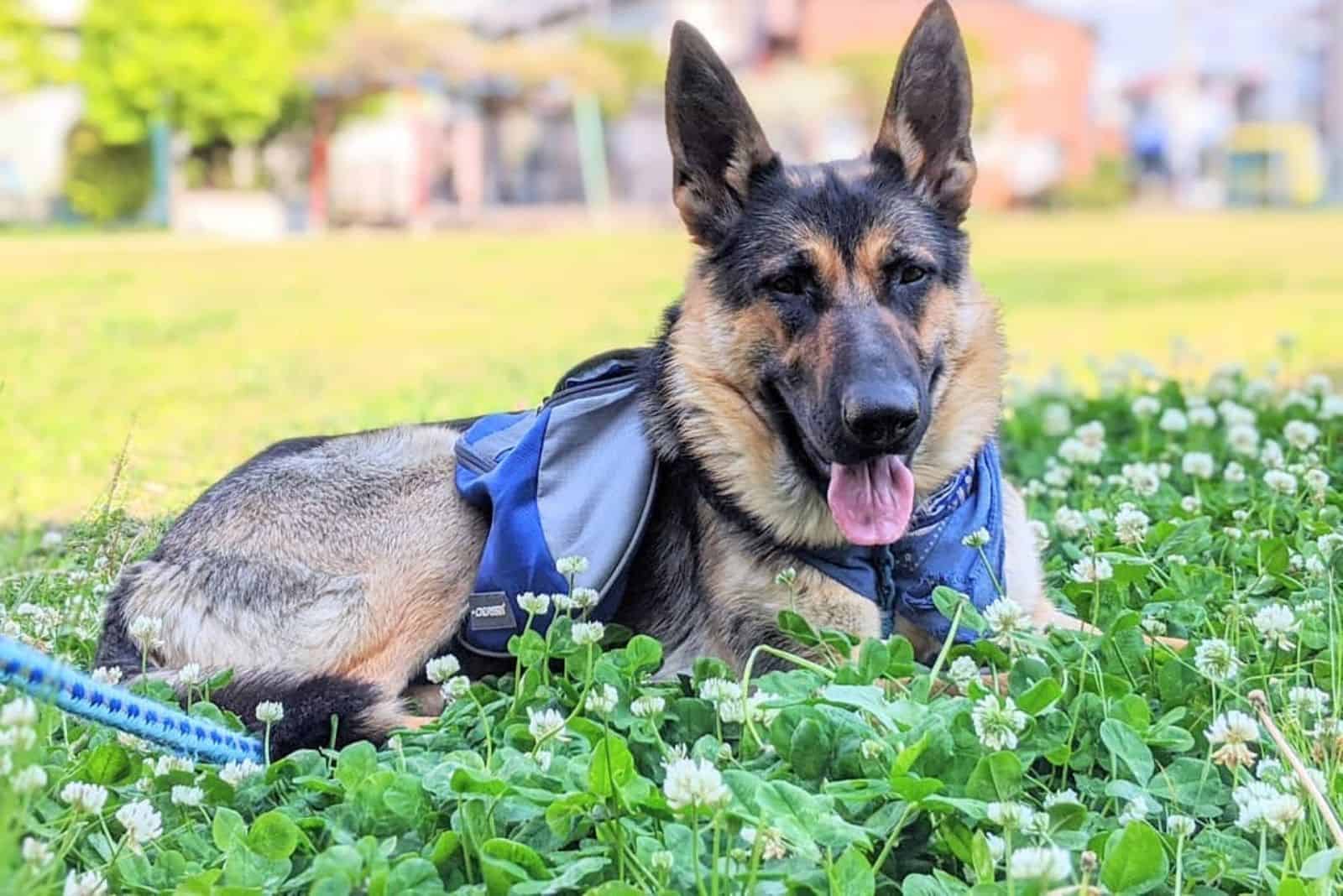
Photo from: @tars.and.murf
Although both make great guard dogs, the German Shepherd can be more vocal. They will tend to raise the alarm, where the VEO will often instinctively remain silent. Don’t be fooled, though.
They aren’t scared. In fact, this silence should be seen as confidence: they are sure they can handle the problem and will take action when they see fit.
With the right training and socialization, a GSD will happily play with kids. In fact, they often adore kids and will adjust the way they play to be more gentle. Although wary of strangers, they will warm to them eventually. The VEO will be less likely to do so, even after socialization. They aren’t known to be great biters, but they are very defensive and will react when provoked.
The GSD is a great worker and loves to be occupied. They will join in the fun and games, and they love to be part of an active family, but will be happy for a cuddle at the end of the day.
The VEO is similar when it comes to working. They’re smart and they want to be kept busy. However, they will be less likely to form a bond with the whole family, and will focus their loyalty on one person. Anyone who they see as being lower in the pecking order will be ignored if they give a command. These dogs may show affection to their pack leader (that’s you), but they might not be happy to share this with anyone else.
They are not recommended as a suitable pet for first-time dog owners. Some people would go as far as to say that they are better suited as a working dog rather than a family pet.
Coat
Both breeds have a dense, medium-length double coat, though the Eastern European dog has a much thicker coat in order to deal with the cold climate where it originated. Both will blow their undercoat seasonally and shed heavily.
The VEO has a more limited range of colors than the GSD. Aside from black or black and tan, they can also come in sable, solid blue, blue, silver, agouti (which is red and gray), blue and tan, and even white!
The ‘normal’ GSD has its classic black and tan, as well as solid black, blue, and white.
What Is The Difference Between European And American German Shepherds?
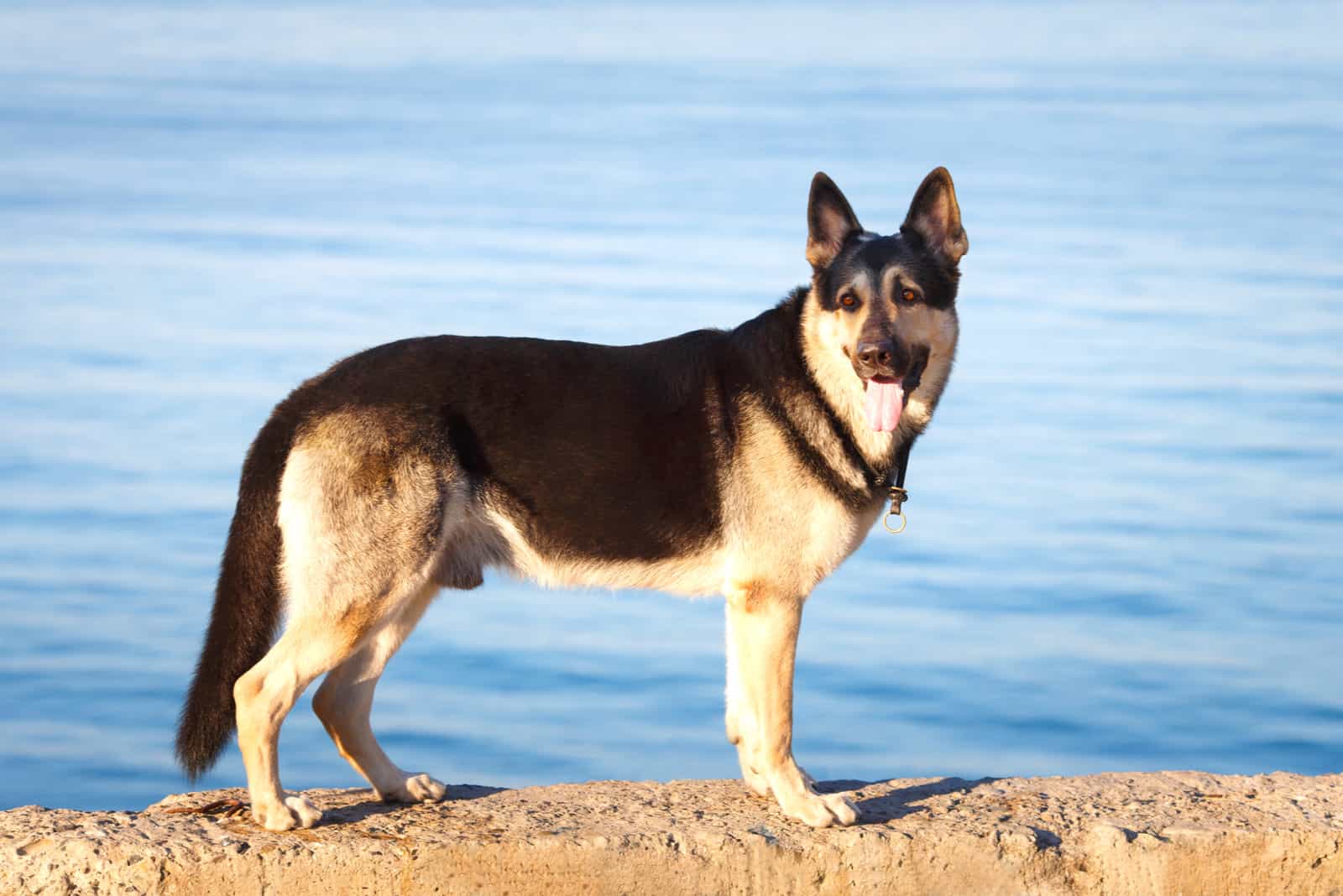
To be honest, not much! We need to be clear, though: this is the European GSD, not the Eastern European version that we have been focusing on in this article.
The American GSD is generally larger and has a bigger skeletal structure, with its distinctive sloping back. The European GSD tends to have a straight back and a more wolf-like head, whereas the American one has a smaller and rounder head.
They both have a coat that is similar in length and texture (it can be medium or long), and are generally seen in typical GSD colors of black and tan.
In terms of temperament, they are pretty much the same, although the American GSD is geared more towards being a family pet, while the European dog is happier when put to work.
This puts it somewhere in the middle of the three breeds and links with the rest of this article: The American GSD is a great family pet, the European GSD is slightly less so, and the Eastern European GSD is probably the least suitable for this role. That’s not to say that it should be ruled out… just that it will take the right person and a lot of hard work to make it a success.
Learn more about the differences between these two dogs in our article East European Shepherd Vs German Shepherd.
Black Eastern European Shepherd
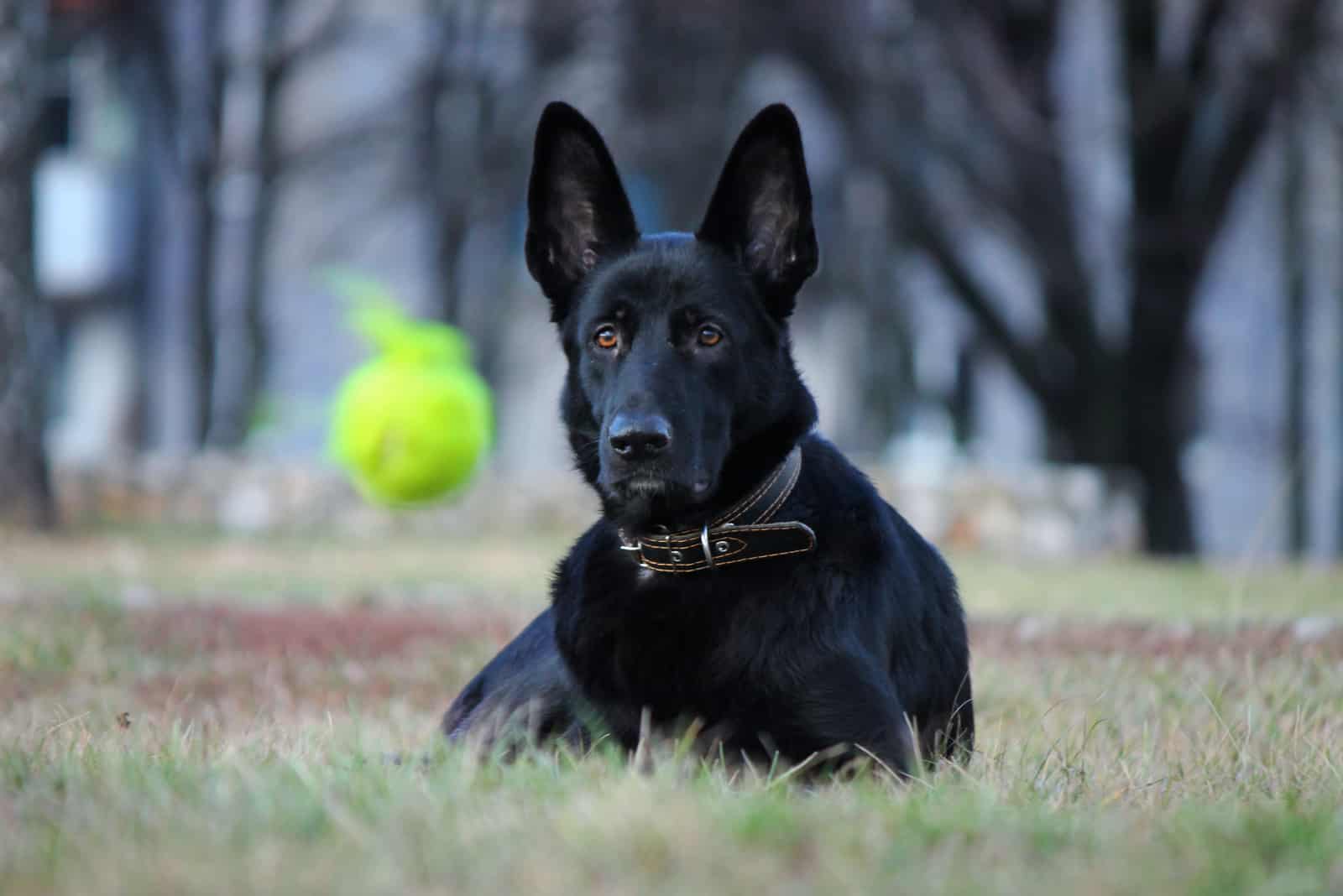
Despite its grim historic association with the KGB, the solid black VEO is a beauty. The majority of these dogs will be completely black or will have a lot of black covering their body. Others will resemble their GSD cousins, but will generally be bigger.
Black dogs often have a tough time of it, perhaps more so in the western world. It’s not fully understood why, but black dogs are seen as aggressive or having other negative associations. Check any shelter or rescue center and black dogs will be disproportionately represented.
The color of any dog is not an indicator of its character or temperament. The genes responsible for pigmentation may affect the health (white dogs are often more prone to deafness and other genetic defects), but otherwise, color does not have any bearing on their nature.
Are Eastern European Shepherds Aggressive?
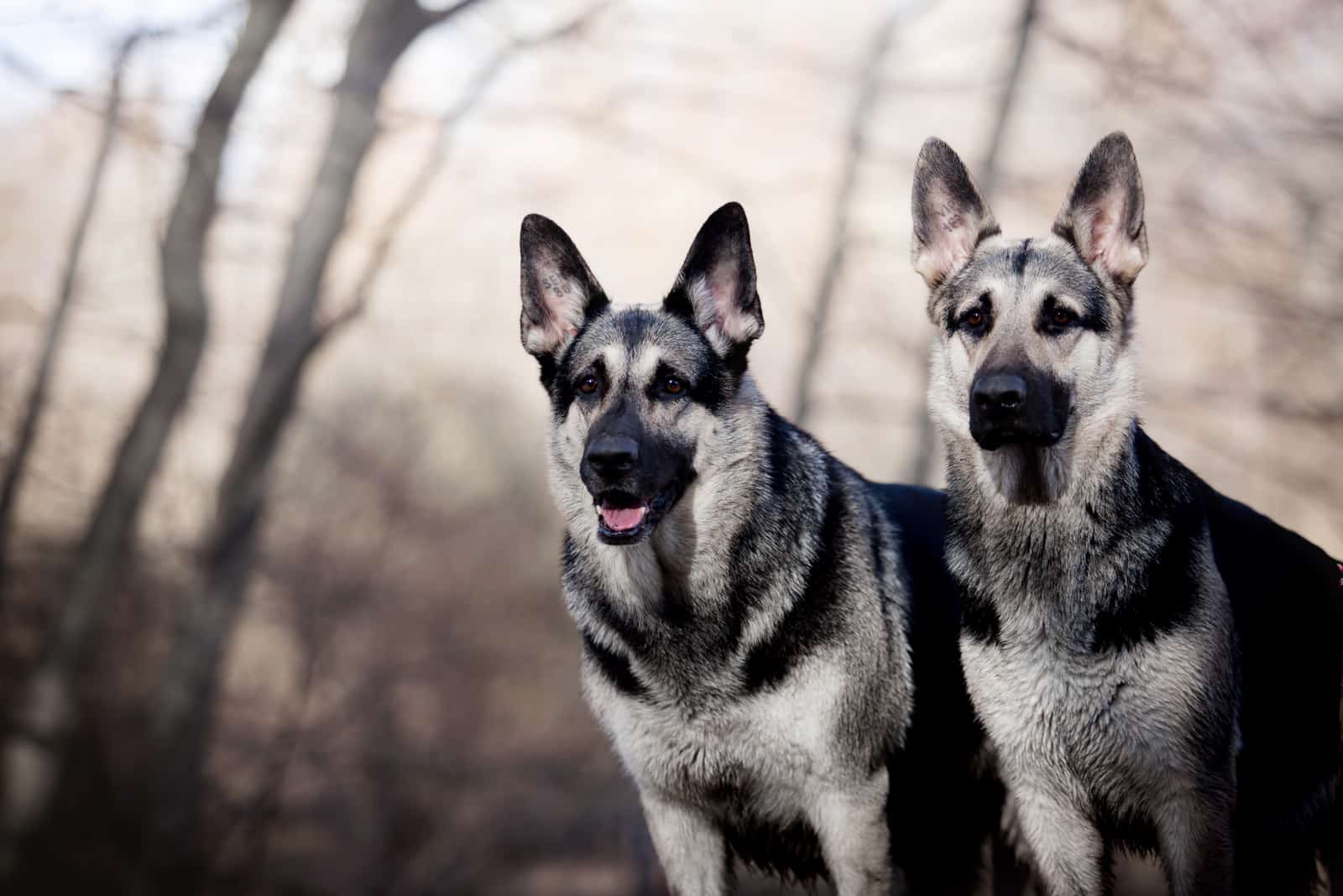
They are capable of aggression, but they very rarely show this without being provoked. VEOs are extremely wary of strangers, and will not back down when facing an intruder or a threat.
Some people suggest that they are not good with kids, though this is a matter of opinion. The same has been said about a good many breeds, but all types of dogs have lived happily with families and kids without incident. Success or failure often depends on common sense as well as the individual character and personality of the dog in question.
However, on balance, it might be wise to avoid keeping one of these dogs when you have a young child unless they are raised together from a young age. They can be intolerant of being pulled about, and they may snap at tiny hands when pushed too far. Their whole raison d’etre is as a working dog, not as a family pet, although they will form a strong bond with their owner and will show them affection.
Finally, the Eastern European Shepherd dog has a very high prey drive, which will send it racing after small animals, including other family pets.
These traits can be controlled to an extent through dog training. Socialization is always recommended for any dog, but with the VEO, it is absolutely essential if you want to introduce it successfully into your family.
Eastern European Shepherd Puppies
Litters are usually between 4 and 10 puppies, but if you want one, you might have your work cut out unless you’re based in Europe. This dog is very popular in Eastern Europe and Russia, but it may be difficult, but not impossible, to locate a breeder in your area.
You should expect to pay between $900 and $1,200 for your pup. Be aware that many breeders will be selling their puppies with a view of them being guard dogs rather than pets. However, if this is what you are looking for, then all will be well.
Eastern European Shepherd Health Problems
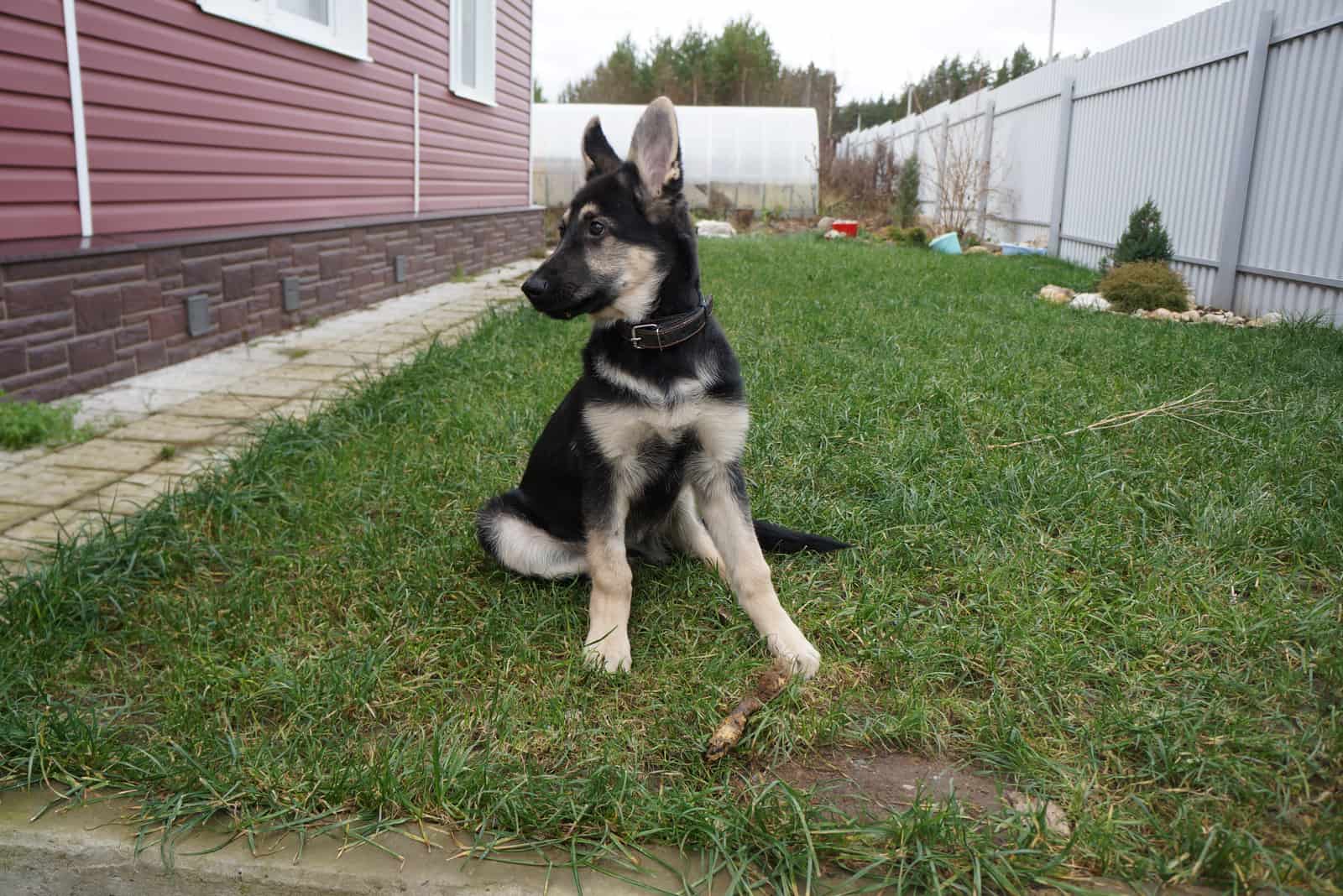
Overall, these are very hardy and healthy dogs, with few reported health problems. Admittedly, this is partly because very few studies appear to have been undertaken into their health. Also, as they are a cross breed, they have a wider gene pool, which has eliminated many of the inherited conditions seen in purebred dogs.
However, two problems that are apparent, ironically enough, are elbow and hip dysplasia. It was the desire to eliminate these conditions that drove people to create the breed in the first place!
Nevertheless, some Eastern European Shepherd dogs will still develop these joint problems occasionally.
Both are the result of a malformed joint, which causes the ends of the bones to rub together. This is very painful and makes the joint inflamed. In many cases, it can lead to arthritis when the dog is older. Elbow dysplasia can be more problematic, mostly because the joint is more complex than a hip joint.
These conditions can be managed by using anti-inflammatory drugs, but if it becomes too severe and painful, then your vet will recommend surgery. With hip dysplasia, the entire hip is replaced with a steel and plastic one, which will work smoothly and painlessly.
Keyhole surgery is used in elbow dysplasia to remove fragmented bone. Where possible, especially if the case is mild, a vet will suggest that the condition is managed through diet, weight control, and pain relief.
Although they are regarded as a healthy breed, they sit within the average general lifespan of all dogs, which is 10 to 12 years. This shouldn’t be too much of a surprise as larger dogs tend to have a shorter life expectancy.
Are VEOs Hypoallergenic?
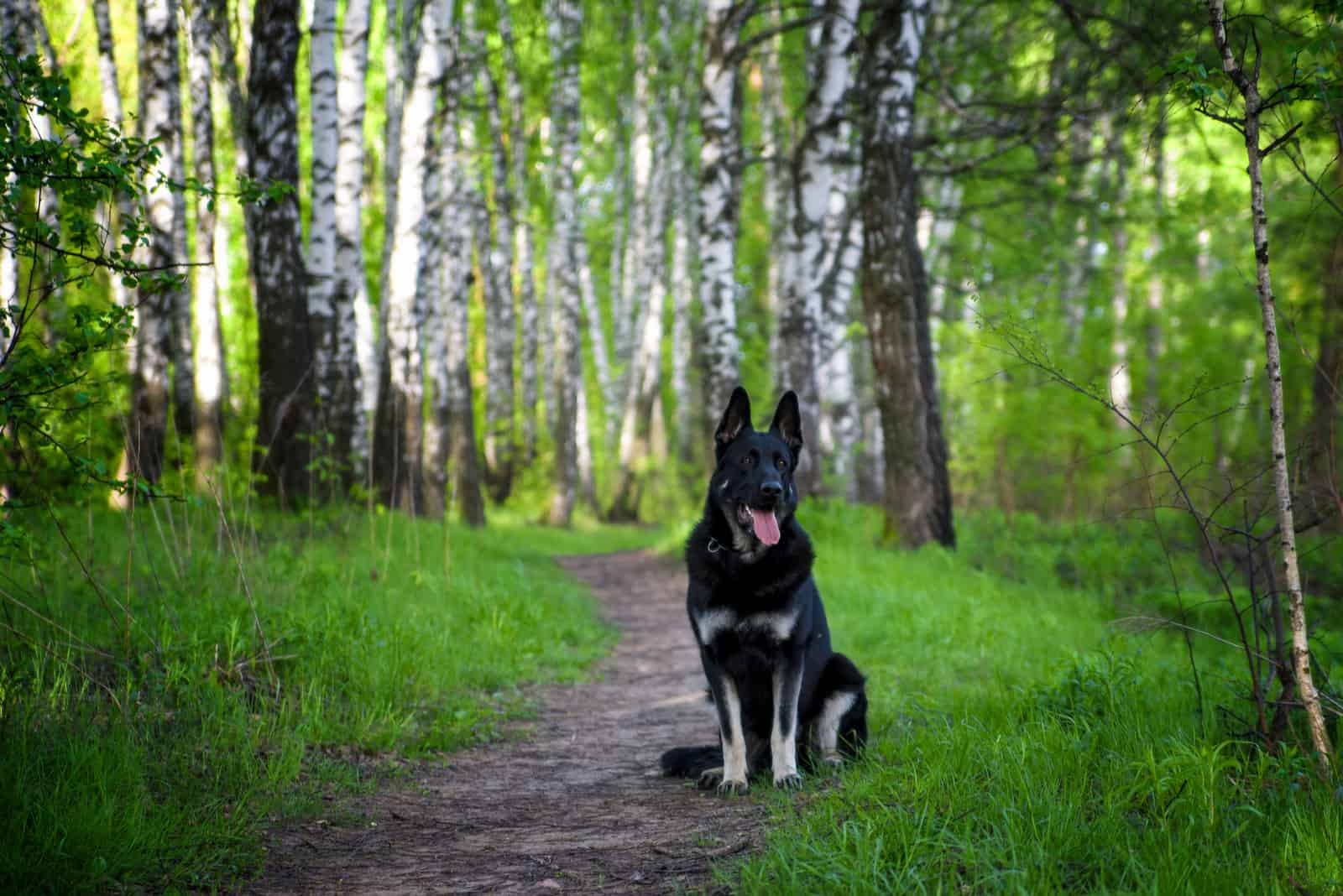
No, they are not considered hypoallergenic.
These are not the ideal breed for anyone with annoying pet allergies. These dogs can shed hair all year round to some extent, but will shed heavily in spring and fall. You will need a powerful vacuum cleaner!
There are ways to control and minimize the amount of hair that sticks to your clothes and furniture, but you won’t stop it completely.
Brushing your dog is by far the best way to get rid of loose hair. The more time you invest in this, the better your chances of reducing the hair in your home.
Before we move on, just a quick word on pet allergies.
It isn’t the dog hair itself that you are allergic to… it’s the allergens on them. These allergens are proteins in the dog’s saliva and dry skin flakes (dander) that get stuck to the hair. Your immune system sees these proteins as harmful, when, in fact, they are not. However, your body will produce histamine, which is the stuff that makes you sneeze, irritates your eyes, and makes your skin become red and itchy.
Despite some of the claims, there is no such thing as an allergy-free dog. Those that shed minimally may have a lower reaction rate as there is less chance of contact with allergens.
Potentially, any dog can cause an allergic reaction if you come into contact with its saliva, dander, or urine.
Last Words
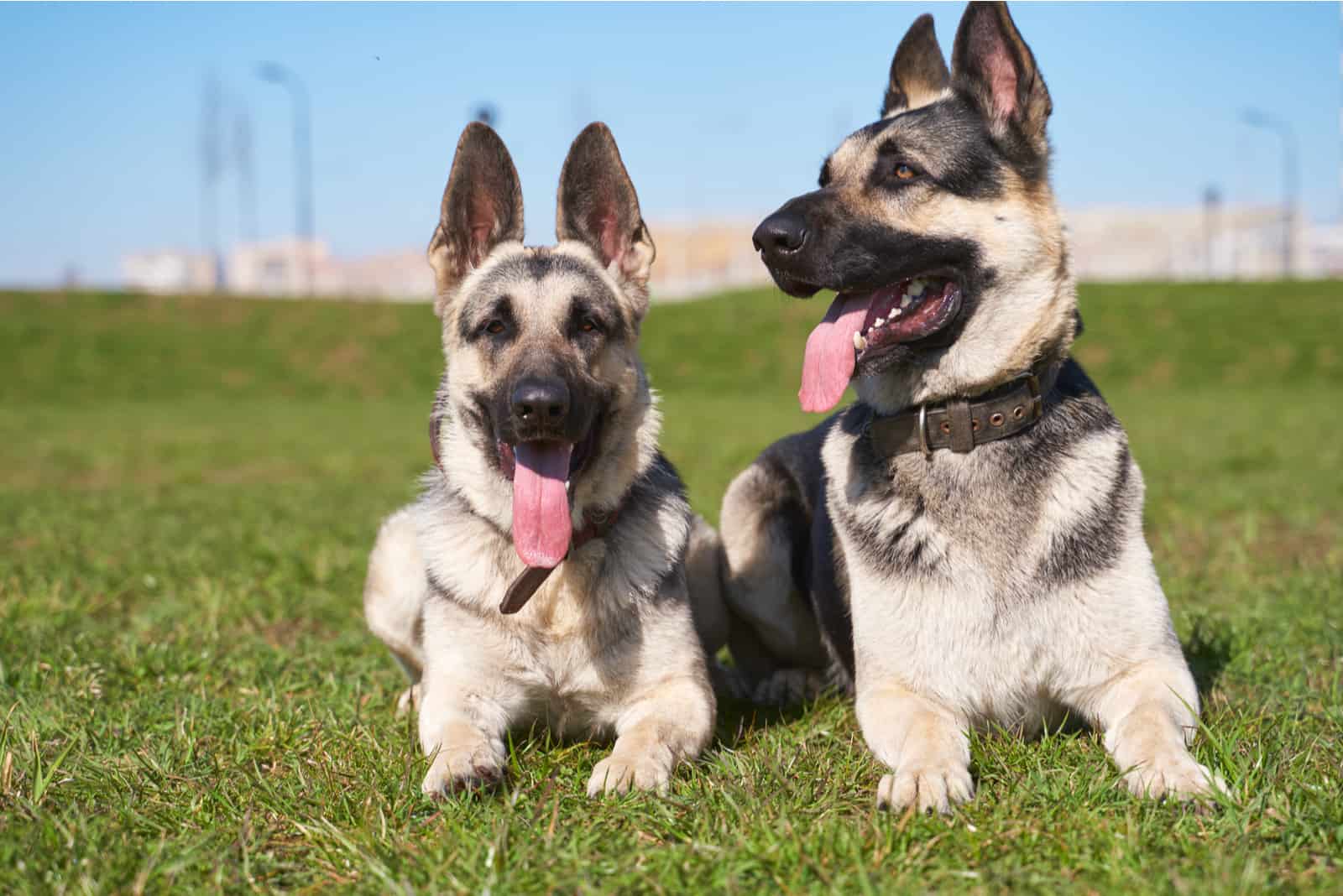
We’ve used the term ‘breed’ to describe this stunning dog throughout this article. However, the VEO is not recognized as a separate breed by many organizations. Across Russia and Europe, where the dog has become very popular in recent times, some kennel clubs have happily accepted them.
They are usually listed as a herding breed, but their history includes police and military service. It is only in recent times that they have begun to find favor as a companion dog, but even so, they are often kept for protection as much as anything else.
If we’ve painted a negative picture of this beautiful dog, it wasn’t intentional. Every dog is precious, but different breeds are suited to certain circumstances. It is better to be cautious than to rush blindly into getting a dog and regretting it later. This is for the dog’s welfare as much as the owners!
To sum up, if you have the space and plenty of time to invest in training, then this might be the dog for you. It would be better if there were no other pets, especially small animals, and older kids (or no kids). You’ll need to be active, and you should have a strong personality.
Ideally, you’ll live on a large property outside of town, with a big yard where this dog can run and play, join you on a jog, and then keep you safe at night. Its thick fur and independent nature equips this dog for outdoor living, and it will be happy in its own kennel.
In the end, it’s just a bigger GSD that needs the right owner.
Read Next:
• Aksaray Malaklisi Dog Breed Facts: Meet Amazing Guardian Dog
• Caucasian Shepherd Price – How Expensive Is The Ovcharka?
